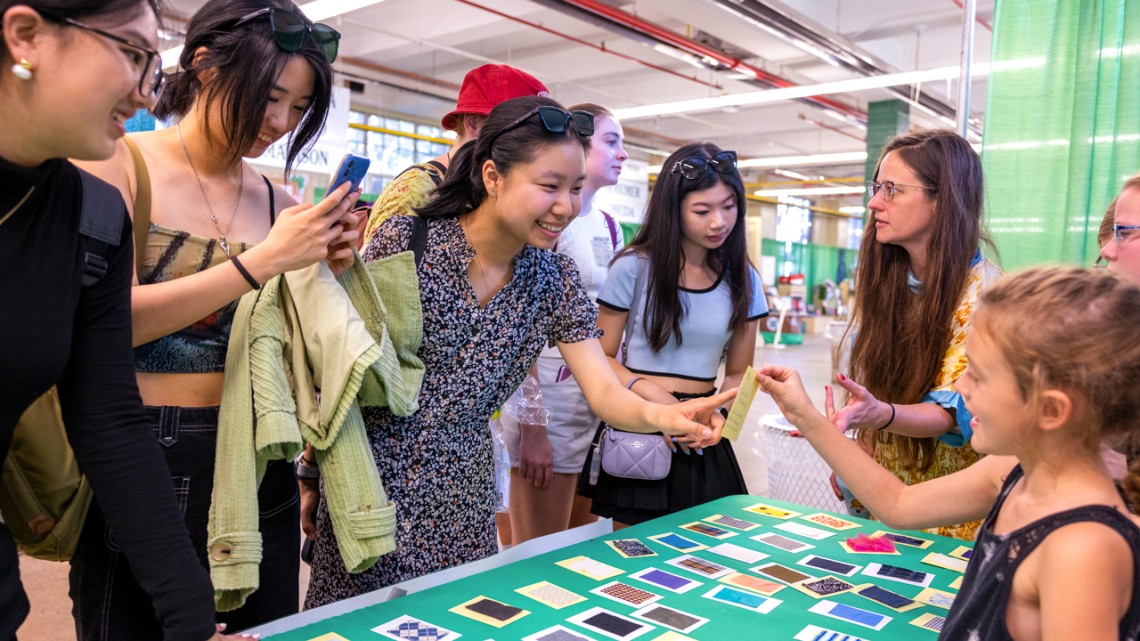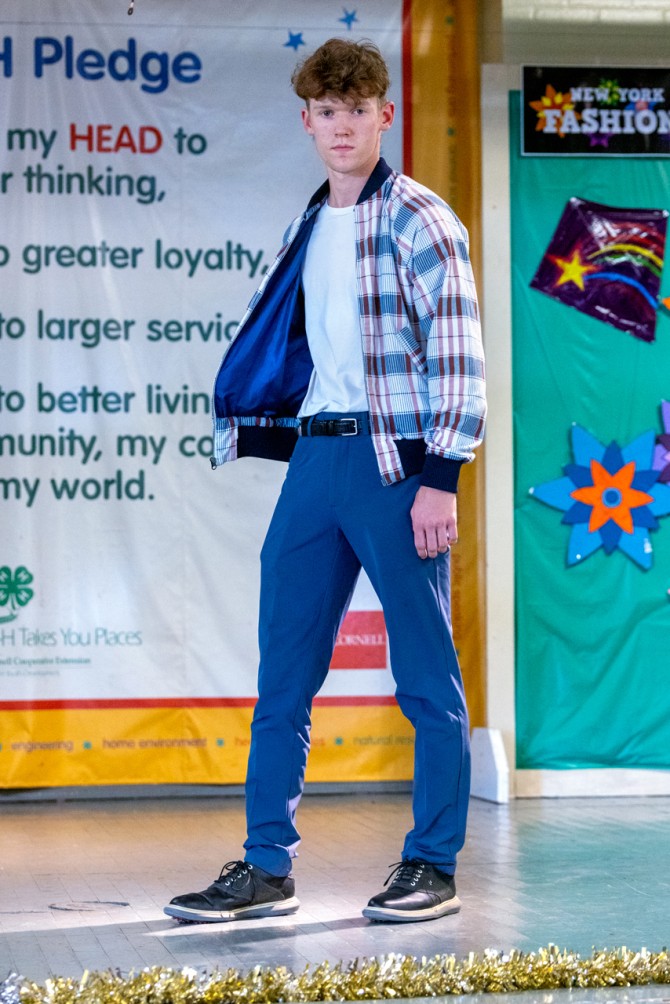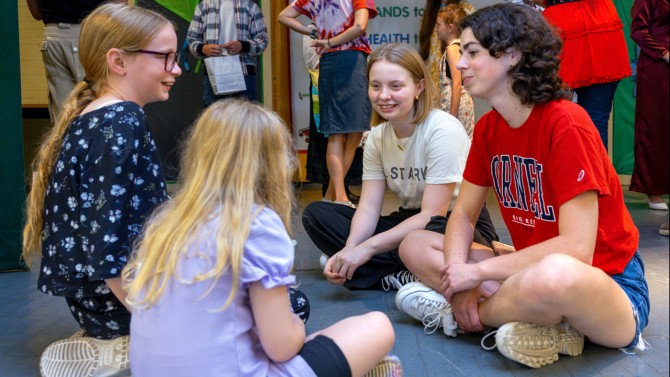
After the 4-H Fashion Revue, participants gathered for a fiber challenge.
Students share design savvy at 4-H Fashion Revue
By Marisa LaFalce
From aprons to a satin wedding jumpsuit, designs by 4-H youth hit the runway at the 4-H Fashion Revue at the New York State Fair, with Cornell students and faculty inspiring the young fashion designers with feedback and discussions about design thinking and innovation.
“I was really impressed with the way that they developed their patterns,” said Henry Pokress ’27, a fashion design management major. “One student created a skirt pattern from paper bags, and another adapted her pantsuit and added a belt. Those are the steps to becoming a designer.”
Aspiring designers ages 6 to 17 from central and western New York showed their work at three fashion shows throughout the day on Sept. 3 at the fair’s 4-H Youth Building in Syracuse, New York. More than 20 College of Human Ecology (CHE) students and faculty attended.
Items ranged from purses and aprons sewn by the youngest contestants, to a satin wedding jumpsuit and a plaid jacket sewn by more experienced 4-H members. After each show, students and faculty from the Department of Human Centered Design talked with the participants about their work and design process. At the day’s end, all participants took a “fiber challenge,” identifying different materials and discussing the benefits of working with each.
“We are thrilled and excited to have Cornell students and faculty here to interact with our 4-H Fashion Revue participants and the public at the New York State Fair,” said Kristina Gabalski, 4-H program coordinator for Orleans County. “Campus connections are a priority for New York 4-H, and this is a wonderful way to inspire and support youth who have an interest in textiles, fiber science, fine art and the apparel industry.”
4-H clubs teach young people sewing and fiber skills as well as experimentation and self-expression. As participants become more skilled, they teach younger club-members and make items for the community. For example, members of Chautauqua County 4-H sew fleece hats for people living in homeless shelters and quilts for veterans.
“4-H means friends and fun activities,” said Madeline Slayton, 12, from Avoca, New York. “Sewing has helped my patience.” Slayton sewed a traditional four-piece Scottish dress and a quilt for the revue.
Denise Green ’07, associate professor of human centered design, collaborated with Gabalski to bring Cornell students to the fair. As a Cornell student, she led a clothing club for the Tompkins County 4-H Urban Outreach program.
“Cornell student participation inspires young people to see what’s possible,” said Green. “4-H fuels their creativity and sense of discovery. I hope that our involvement also demonstrates how that process can be formalized by bringing together science, design and cultural studies.”
4-H is lead throughout the state by Cornell Cooperative Extension (CCE), which is administered jointly through CHE and the College of Agriculture and Life Sciences. The CCE state office is housed at CHE’s Bronfenbrenner Center for Translational Research.
The fashion revue returned to the fair after a four-year hiatus due to the pandemic.
“It was wonderful to see the textile talents of 4-H youth from across the state on display at the New York State Fair,” said Rachel Dunifon, the Rebecca Q. and James C. Morgan Dean of CHE. “I was inspired, as were the CHE students who joined me at the fair, to enjoy the show and mentor these budding designers. I can’t wait to see how they grow and evolve through their time in the program.”
Marisa LaFalce is a communications assistant in the College of Human Ecology.
Media Contact
Get Cornell news delivered right to your inbox.
Subscribe



